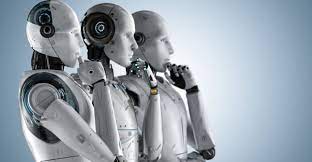Automation and robotics: the future of work and its implications for the labor force

Automation and robotics are rapidly transforming the nature of work, with significant implications for the labor force. The automation of many routine and repetitive tasks has already led to the displacement of human workers in certain industries, and this trend is expected to continue in the coming years.
One of the main advantages of automation and robotics is their ability to perform tasks with speed and precision, without the need for breaks or rest. This makes them ideal for jobs that require high levels of repetition or involve dangerous or hazardous environments, such as manufacturing, transportation, and construction.
However, the widespread adoption of automation and robotics also has significant implications for the labor force. While some jobs will be completely replaced by machines, others will require workers to adapt to new roles and acquire new skills to remain relevant. This will require significant investment in education and training programs to ensure that workers are equipped with the skills needed to succeed in the new job market.
Another important consideration is the potential impact on income inequality. Automation and robotics are likely to create new job opportunities in high-skilled roles, while simultaneously displacing workers in low-skilled jobs. This could exacerbate existing inequalities in the labor market, particularly if workers are unable to acquire the necessary skills to transition to new roles.
Overall, while the adoption of automation and robotics is likely to lead to significant changes in the nature of work, it is important to ensure that these changes are managed in a way that is equitable and supports the long-term prosperity of workers and society as a whole.
Additionally, the increased use of automation and robotics in the workplace may also have an impact on job satisfaction and overall well-being. While machines can perform many tasks with efficiency, they lack the emotional intelligence and creativity that humans bring to the workplace. As a result, some workers may feel disengaged or unfulfilled in their roles, leading to a decrease in job satisfaction and potentially even burnout.
Furthermore, the use of automation and robotics may also raise ethical questions about the role of technology in the workplace. For example, there are concerns about the potential for biased algorithms to perpetuate discrimination in the hiring process or other workplace practices. There are also questions about the accountability and responsibility of companies when automation and robotics are involved in workplace accidents or errors.
Despite these challenges, the adoption of automation and robotics also presents opportunities for innovation and growth. As machines take on more routine and repetitive tasks, workers can focus on higher-level activities that require creativity, problem-solving skills, and emotional intelligence. This could lead to the development of new products and services, as well as the creation of new jobs in areas such as data analysis, programming, and robotics maintenance.
In conclusion, the future of work will undoubtedly be shaped by the continued adoption of automation and robotics. While this will bring about significant changes and challenges, it also presents opportunities for growth and innovation. It will be important for policymakers, business leaders, and workers alike to work together to ensure that these changes are managed in a way that is equitable, sustainable, and supports the long-term prosperity of society as a whole.


